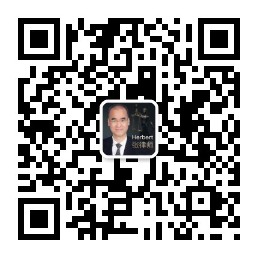![]()

常用法律:
......关注公众号,阅读全部现行法律、行政法规等,了解最新法律资讯,还有更多
欢迎访问本站。
用劳动合同法提升企业人力资源管理水平 怎样让会议更有效 怎样建设培训体系
Read Heart Sutra in Sanskrit Transliteration
Background:
This program has two purposes. It serves to demonstrate the trainer skills for both clients and training companies. It helps those heart sutra readers who want to read the sutra in Sanskrit.
1) The demonstration program is just the first 1 hour or so session of the entire program which is about 10 hours.
The participants of the demonstration program will be able to evaluate the trainer's skills in the following areas: Motivating the interest to learn, understanding the needs of the participants, checking the level of understanding, invitation for participation and handling over-participation, giving learning instructions, giving balanced learning feedback, explanation and clarification and other training room activity arrangement.
2) For those who want to read heart sutra in Sanskrit, after about 10 hours, you will be able to read the sutra in Sanskrit with the help of Latin transliteration. You will also be able to write in Siddham and Devanagari commons words such as prajna.
Program Outline
Part 1
When Bodhisattva Avalokitesvara practices the profound Prajna-paramita, he intuitively realizes that the five aggregates (skandhas) are of Sunyata nature thus securing his deliverance from all distress and sufferings.
ārya-avalokiteśvaro bodhisattvo gambhīrāṃ prajñāpāramitā caryāṃ caramāṇo vyavalokayati sma: panca-skandhās tāṃś ca svābhava śūnyān paśyati sma.
0、Warming up 20 min
brief history of Heart Sutra in Sanskrit
Sanskrit alphabet in Siddhim
Sanskrit alphabet in Devanagari
Sanskrit transliteration
1、 Avalokiteshivara 5 min
different names, history and commentators
2、 bodhisattva 5 min
3、 practice 2 min
4、 prfound 2 min
5、 prajna 15 min
the pronunciation of prajna
writing prajna in Sanskrit
Alternative forms and conjuncts
6、 paramita 5 min
7、realize 2 min
8、five skandhas 3 min
9、 empty 3 min
10、deliverance from sufferings 8 min
Part 2
Sariputra! Form (rupa) does not differ from Sunyata, nor Sunyata from form. Form is identical with Sunyata (and) Sunyata is identical with form. So also are reception (vedana), conception (sanjna), mental conduct (samskara) and consciousness (vijnana) in relation to Sunyata.
iha śāriputra: rūpaṃ śūnyatā śūnyataiva rūpaṃ; rūpān na pṛthak śūnyatā śunyatāyā na pṛthag rūpaṃ; yad rūpaṃ sā śūnyatā; ya śūnyatā tad rūpaṃ. evam eva vedanā saṃjñā saṃskāra vijñānaṃ.
Part 3
Sariputra, the Sunyata nature of all things is neither created nor annihilated; neither impure nor pure; and neither increasing nor decreasing.
iha śāriputra: sarva-dharmāḥ śūnyatā-lakṣaṇā, anutpannā aniruddhā, amalā avimalā, anūnā aparipūrṇāḥ.
Part 4
Therefore, in Sunyata, there is neither form (rupa), reception (vedana), conception (sanjna), mental conduct (samskara), nor consciousness (vijnana); there is neither eye, ear, nose, tongue, body nor mind; there is neither form, sound, odor, flavor, feeling nor idea; there are no such things as the eighteen realms of sense (dhatus) from the realm of sight up to that of the faculty of mind (vijnana); there are no such things as the twelve links in the chain of existence (nidanas) from ignorance (avidya) with also the end of ignorance up to old age and death (jaramarana) with also the end of old age and death; there are no (such things as) the four noble truths and there is neither Wisdom nor obtainment.
tasmāc chāriputra śūnyatayāṃ na rūpaṃ na vedanā na saṃjñā na saṃskārāḥ na vijñānam. na cakṣuḥ-śrotra-ghrāna-jihvā-kāya-manāṃsi. na rūpa-śabda-gandha-rasa-spraṣṭavaya-dharmāh. Na cakṣūr-dhātur. yāvan na manovijñāna-dhātuḥ. na-avidyā na-avidyā-kṣayo. yāvan na jarā-maraṇam na jarā-maraṇa-kṣayo. na duhkha-samudaya-nirodha-margā. Na jñānam, na prāptir na-aprāptiḥ.
Part 5
Because of no obtainment, Bodhisattvas who rely on Prajna-paramita, have no
hindrance in their minds, and since they have no hindrance, they have no fear,
are free from perversive and delusive ideas and attain the Ultimate Nirvana.
All Buddhas of the past, present and future attain the Full Enlightenment (anuttara-samyak-sambodhi)
by relying on Prajna-paramita.
tasmāc chāriputra aprāptitvād bodhisattvo prajñāpāramitām āśritya viharatyacittāvaraṇaḥ. cittāvaraṇa-nāstitvād atrastro viparyāsa-atikrānto niṣṭhā-nirvāṇaḥ. tryadhva-vyavasthitāḥ sarva-buddhāḥ prajñāpāramitām āśrityā-anuttarāṃ samyaksambodhim abhisambuddhāḥ.
Part 6
So we know that Prajna-paramita is the great
supernatural Mantra, the great bright, unsurpassed and unequalled Mantra which
can truly and without fail wipe out all sufferings.
Therefore, He uttered the Prajna-paramita mantra which reads:
Gate, Gate, Paragate, Parasamgate Bodhi Svaha!
tasmāj jñātavyam: prajñāpāramitā mahā-mantro mahā-vidyā mantro 'nuttara-mantro samasama-mantraḥ, sarva duḥkha praśamanaḥ, satyam amithyatāt. prajñāpāramitāyām ukto mantraḥ. tadyathā: gate gate pāragate pārasaṃgate bodhi svāhā.
Part 7
Pronunciation review
课后阅读:
Contact
Mr. Herbert ZHANG Lawyer mobile +86 1391O293O18
Email address: 965OO262O@qq.com (replace O with 0 if you copy and paste)
WeChat: Laws666Lawyers

邮箱:![]()
感谢您访问本站。
行政法规、规章:
互动双赢:
长期合作: